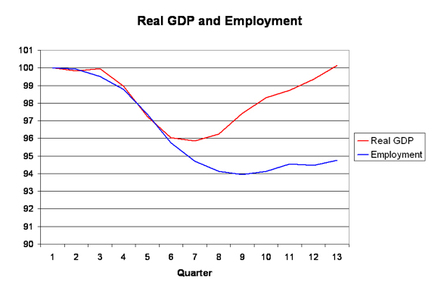This is the title that caught my attention as I looked through the brochure of an upcoming HR conference. It went on to describe the "Thiagi Four-Door Model", or 4D. I have been involved in training and development many years now, and have prided myself of keeping my finger on the pulse of the industry. And, although i have integrated learning activities (AKA games) into my materials many years ago, somehow Sivasailam Thiagarajan slipped by me without even noticing. Now, that may be my fault entirely; perhaps my finger has been placed as squarely on the industry as I had believed. Nonetheless, Thiagi seems to have a pretty keen idea with his 4D model, and this little post is my attempt to spread the word about it's potential benefits, for all of us; trainers, learners, facilitators, managers, organizations - everyone. So, I have a few links for you to investigate; consider these the "library" door. Sorry, I don't have the time to create an entire 4D implementation to introduce you to Thiagi, but we could use this blog for one of the other doors in his model; the social arena - after all I have named this blog the HR Salon. So, go have a look at the links, find other material, and come back here to share your impressions, and by all means if you have been using this model, do share some examples so we can all benefit from your experience.
Some "library" links for your viewing pleasure: Two part interview with Russ Powell; he worked with Thiagi using the 4D model; A great video of Thiagi speaking to students at UMBI - warning the video is long, but the content covered will give you a good feeling for the Thiagi's perspective, and a deeper understanding of the 4D model. Lastly, here is a link to some great podcast content on Thiagi's own website.
Again, maybe you all knew about Thiagi all along, but at the risk of appearing at the back end of the curve, I wanted to post this information in the hopes that at least one person is introduced to something that could drastically change how they teach and learn.
Some "library" links for your viewing pleasure: Two part interview with Russ Powell; he worked with Thiagi using the 4D model; A great video of Thiagi speaking to students at UMBI - warning the video is long, but the content covered will give you a good feeling for the Thiagi's perspective, and a deeper understanding of the 4D model. Lastly, here is a link to some great podcast content on Thiagi's own website.
Again, maybe you all knew about Thiagi all along, but at the risk of appearing at the back end of the curve, I wanted to post this information in the hopes that at least one person is introduced to something that could drastically change how they teach and learn.


 RSS Feed
RSS Feed